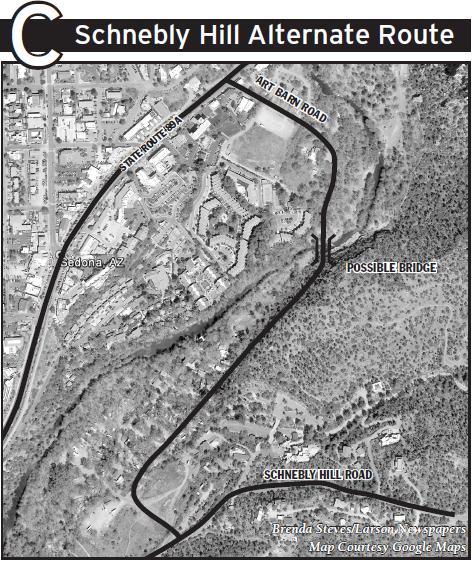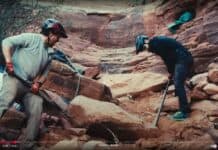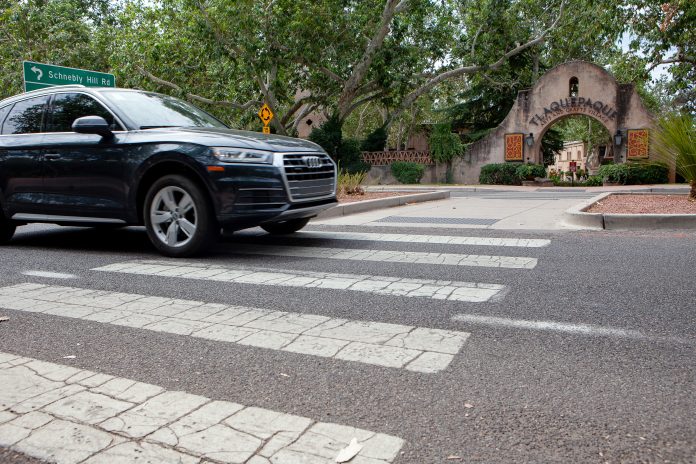Any Sedona residents who have been here more than two years can tell you the last two springs have seen some of the busiest traffic in our history driven in part by American tourists unable to travel abroad or who opt for the COVID-free outdoors of the American West on hiking trails rather than catching a potential disease at a crowded indoor tourist attraction.
Exacerbating the problem for us are more than 3,000 vacation rentals in Sedona area that now outnumber actual proper hotel rooms in an unregulated, short term rental vacation market.
While some residents may blame the Sedona Chamber of Commerce for its marketing efforts, many of these vacation rentals are doing their own destination marketing, divorced from the chamber and completely unregulated and unregulatable by the Sedona City Council.
For instance, a PR representative recently sent me her list of “The Most Luxurious Airbnb in Every State,” which includes a paid-for listing for a West Sedona rental. Even if the city kills all destination marketing forever, vacation rental owners will still promote their rental businesses to tourists.

The city of Sedona does have some proposals scheduled over the next few years to lessen traffic, but residents question their efficacy.
The biggest bottleneck is the Tlaquepaque crosswalk, proven time and again by studies, anecdotally by drivers and anyone who can search “Sedona traffic” on a map.

A line of cars begins at the crosswalk between Tlaquepaque and Tlaquepaque North. Northbound, the traffic delays on State Route 179 start here, begins to backup to the Schnebly Hill Road roundabout down SR 179 and gallery row until Poco Diablo on some afternoons and as far south as Back O’ Beyond on a busy weekend.

Eastbound traffic also begins to back up at Tlaquepaque, snakes up the hill the Y roundabout, then up Cooks Hill, forcing every driver who happens to want to go to Uptown or down SR 179 onto the same two lanes.

One resident connected to Tlaquepaque stated city contractor Kimley-Horn determined removing the crosswalk would only save about two seconds per vehicle. Entirely true. But two seconds per 1,500 vehicles per hour adds up to 50 minutes, a significant amount of time wasted every hour. Thus, paramount would be removing that crosswalk.
The city has plans to build a pedestrian underpass, but the process has now taken years. Regarding rumors of a lawsuit, the city should call the bluff and get crackin’ on construction.
The other potential is to build a road from State Route 89A past the Brewer Road roundabout, connecting to Brewer Road at Ranger Road. While some residents may use this slight detour, it will really only save some drivers heading towards Uptown some time, as some drivers may detour southbound a few 100 feet sooner. It, however, does not alleviate the Tlaquepaque bottleneck.

The other plan is extending Forest Road down to State Route 89A, connecting westbound traffic to the road and avoiding the Y roundabout. This may help some drivers heading towards Uptown get off the road a bit faster, and help westbound drivers from Uptown to get to West Sedona by avoiding those drivers heading south on State Route 179, but anyone heading eastbound toward Uptown will still have to wait in the long delay of Cooks Hill before reaching the escape route on Forest Road.
The city needs to work on eliminating the delay at Tlaquepaque, perhaps by extending a “Tlaquepaque Bypass” from the Schnebly Hill Road roundabout to Uptown to get drivers from SR 179 into Oak Creek Canyon without forcing them for no reason to wade through Tlaquepaque and Uptown, the most congested area of the city.

These canyon tourists have no plans to stop in Uptown nor Tlaquepaque, so why funnel them though there?
The city also needs to press the Arizona Department of Transportation to widen one lane of State Route 179 from the Village of Oak Creek to the Y.
Northbound drivers pass Tlaquepaque and reach the double lanes at Creekside and, for a brief and beautiful stretch, traffic delays are almost eliminated as drivers who waited forever on SR 179 have a few 100 feet to pass slow drivers whose license plates they have now memorized.
The Arizona Department of Transportation had a long-term plan to fix the road that the Voice of Choice political group worked to ruin 20 years ago. For the 10% of Sedona residents who were here back then, ADOT built the roads wide enough for two lanes in both directions. ADOT first built the new second lane, moved both lanes of traffic on it, then renovated the old existing lane, and move moved half of the cars back. The road footprint is wide enough for four lanes per ADOT safety standards which is the “secret” plan. If ADOT replaces the wide median with a narrow one, there is plenty of room for two lanes and bike lanes from Back O’ Beyond to the Y.
Christopher Fox Graham
Managing Editor


















